
Architecture students Wing Yi Hui and Lap Ming Wong of theOslo School of Architecture and Design have completed a domed latticed pavilion as part of a performance-oriented design project.
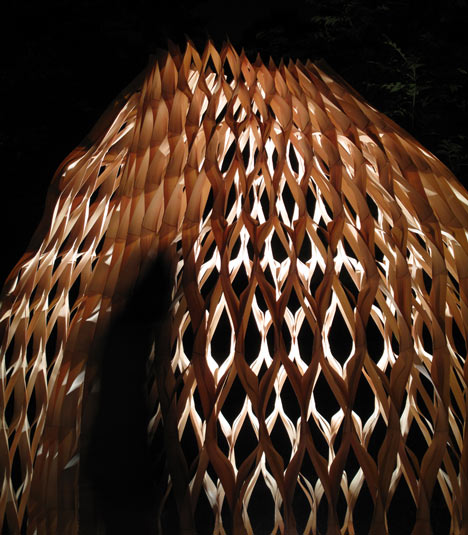
The pavilion is made up of several laminated strips of wood that have been bent in the middle and joined together, forming a diamond-shaped lattice-work.
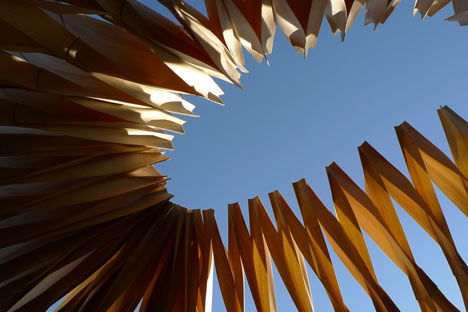
Adding moisture to the thin wooden elements resulted in them curving across the grain, thus increasing their structural capacity.
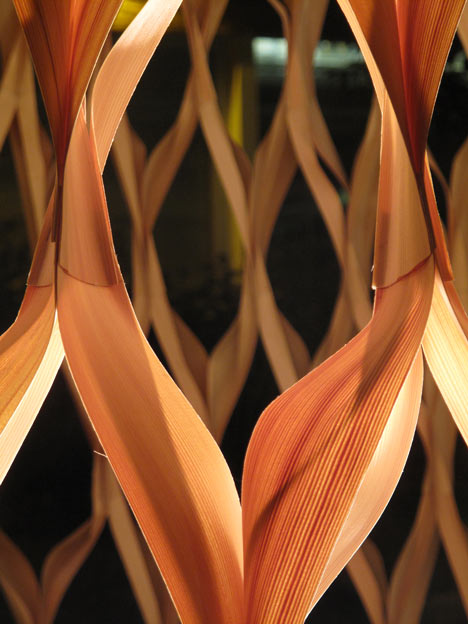
The aim of the project was to investigate the intrinsic capacities and performance of wood and was conducted by Prof. Michael U. Hensel, Defne Sunguroğlu Hensel and Prof. Dr. Birger R. Sevaldson.
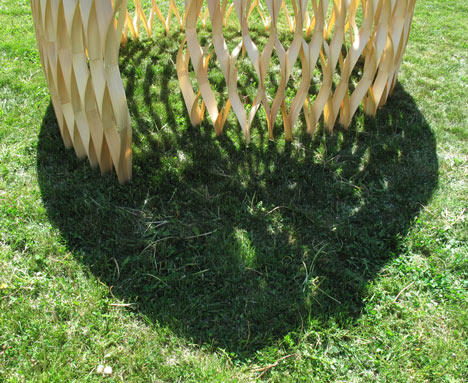
Here’s some more information about the project:
The project seeks the equilibrium of precise control and natural response of the intrinsic wood capacities and aims to transform an everyday life material and methodology into a novel life. The research went through a series of intensive experiments on the performance of wood upon various stimulations. A number of crucial parameters were extracted for further development: the hygroscopic performance and anisotropic behavior of wood.
Due to these two specific behaviors of wood, surface moisturization results in curving across grain and increases the structural capacity of a flat piece of wood. This is attributed to the development of swelling pressure within the microstructure of wood and is especially significant when moisturizing veneer. During the process of swelling, pressure difference among cells results in energy storage within the micro structural system. By applying lamination constraints to the curved veneer before the rebound upon drying, energy can be stored. Through testing the process of lamination and deformation, specific system with highly variable geometry can be explored.
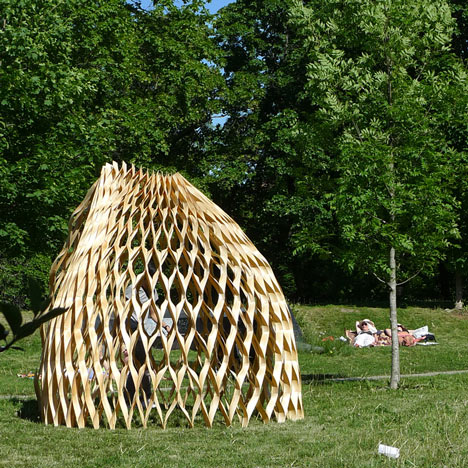
Precise control on lamination area creates predictable hollow structural support and geometrical connection, while the natural response from wood upon lamination and connection creates responsive secondary layer of structure, enclosure and porosity. Experimental models and systems go through both physical and digital evaluations.
Due to the complexity of structural arrangement and performance of wood, accurate simulations can hardly be done solely with digital computation. The evaluations and explorations are done by oscillating between digital methodology and physical experiments throughout the research process.
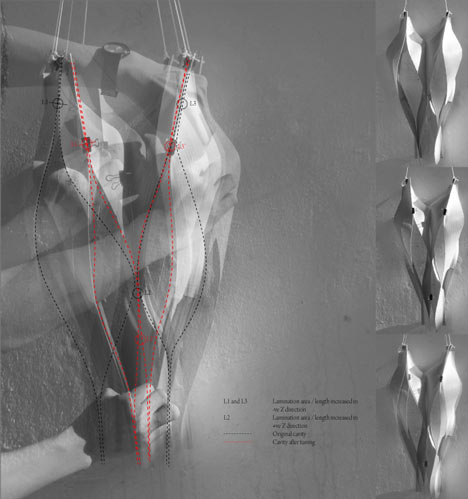
The computational tool predicted the approximate dimensions, global geometry and compositional curvature while physical tests are carried out to combine the material performance with computer-generated data for further evaluations. Material performance became extremely crucial and prior as the system can never coincide with data generated from pure digital computation and fabrication. The relationship between the tools create unique interface for generation of the emergent typologies and global geometry of performance-oriented exploration as such.
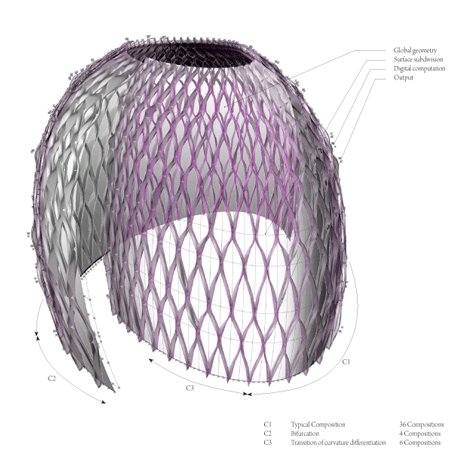
At the later stage of the research, strategic moisturization, translucent qualities of thin veneer and elasticity of wood are being explored with very thin veneer (thickness=0.6mm) into potential architectural element. Full-scale construction is being conducted as an experiment. The global geometry with systematic assembling is determined by parametric setup with environmental and atmospheric data.
The construction consisted of 46 groups of components while each of them consisted of 5 components: 36 identical groups of them are fabricated for the major structure, while 3 components in 6 groups of the total are fabricated differently for extreme curvature shift.
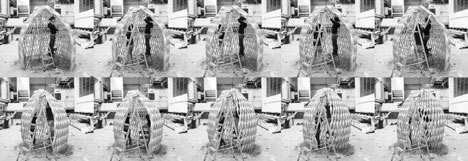
As the system focuses on the equilibrium of natural behavior as well as precise lamination, the allowance in between the components illustrates the elasticity within the lightweight structure. Adding components and varying lamination position and area creates significant internal self-organization of the system and generate highly differentiated geometry.
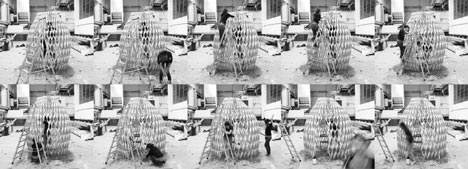
Without the use of formworks and advanced computational machines to facilitate the fabrication process, curvature within the global geometry in all direction as well as porosity of the assembly can be manipulated simply by varying the parameters of lamination positions and area. Standardized and identical components are then performing with customized post-construction alterations without fabrication of unique components or pre-shaped elements. Standardization could actually achieve customization in the research without production large amount of waste.
By understanding the performance of material, and allowing it to perform its intrinsic properties, innovative and sustainable methodology of architectural production could be emerged as a natural response. Deformation of wood due to moisture is no longer a nuisance but a benefit to fabrication.
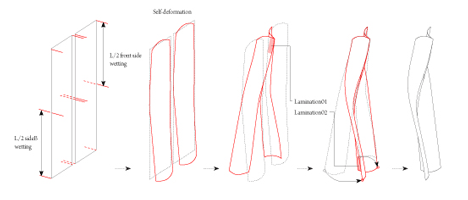
Performance-oriented design: Wood Pavilion
Students: Wing Yi Hui, Lap Ming Wong from Oslo School of Architecture and Design
Performance-oriented design studio, Conducted by: Prof. Michael U. Hensel, Defne Sunguroğlu Hensel and Prof. Dr. Birger R. Sevaldson.
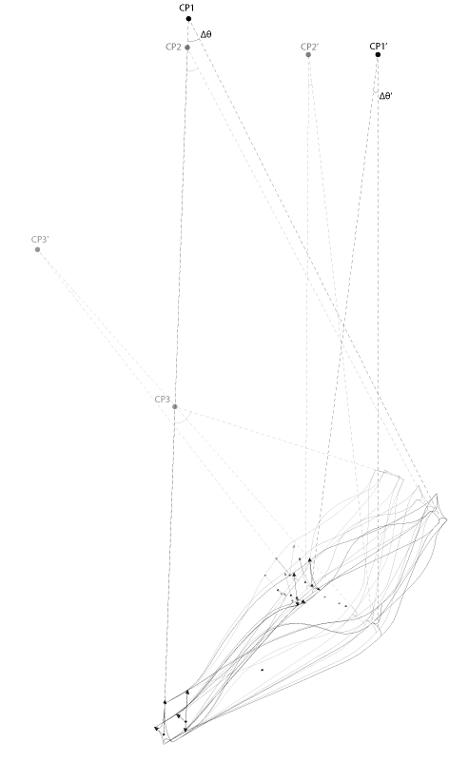
- ۹۰/۰۳/۱۳





















